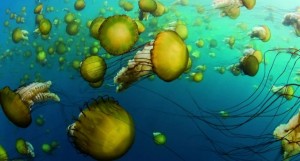“How inappropriate to call this planet Earth when it is quite clearly Ocean.”
— Arthur C. Clark
The world’s first comprehensive Census of Marine Life — past, present, and future — was released in 2010 in London, at the same time that Paul Snelgrove released his book: Discoveries of the Census of Marine Life: Making Ocean Life Count.
 The Census of Marine Life was started by two scientists who realised that the Oceans were in trouble and we were doing nothing about it.
The Census of Marine Life was started by two scientists who realised that the Oceans were in trouble and we were doing nothing about it.
Planet Ocean
Although the oceans cover some 70% of our planet, providing more habitat than all other habitat combined, and produce about half of the new life everyday on earth as well as about half of the oxygen that we breathe, we know more about the surface of the Moon and about Mars than we do about the oceans
The Census project was undertaken by a global network of 2700 scientists from more than 80 nations who engaged in a 10-year scientific initiative assess and explain the diversity, distribution, and abundance of life in the global ocean.
The three main components of the census were organised around the questions:
What has lived in the oceans?
What does live in the oceans?
What will live in the oceans?
They wanted to construct the history of marine animal populations since human predation became important – roughly the last 500 years. The Roman development of salting fish as a means of preservation changed fishing patterns from one of purely catching “the meal for the day” to industrial scale fishing.
New Technologies
The study examined and used new technologies to explore unknown species and habitats, migration routes and distribution patterns, how the oceans are changing and what we can expect from them in the future.
New technologies facilitated research, remotely operated vehicles combined with satellite communication enabled distant scientists to participate in scientific investigations thousands of miles away, and the new science of genetic bar coding , developed by geneticists enabled the exact recognition of fish species.
Results have been quite astounding, with 4-5 new species from the ocean being described each day. The information has proved extremely valuable already in many ways, for example, scientists in the Gulf of Mexico had just taken a census of species in the gulf which proved very useful when the Gulf Oil Spill happened , to establish a clear idea of how marine life in the area had been affected.
Paul Snelgrove gives a fascinating talk supported by illuminating graphics and astounding photographs.


